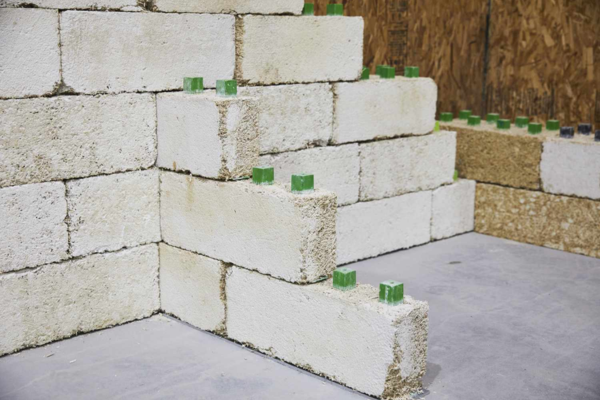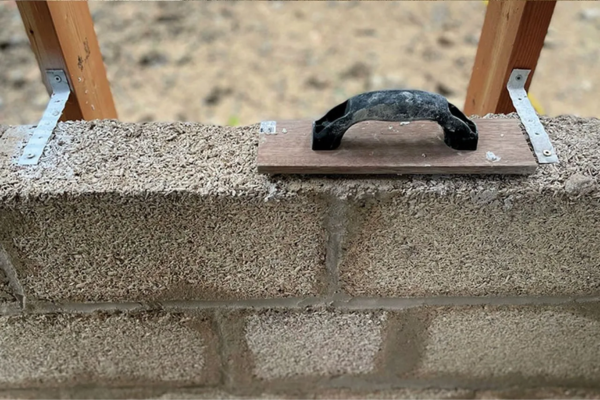.png)
Building a Sustainable Future with Eco-Friendly Material
Imagine a world where buildings don't just stand; they breathe, grow, and contribute to the earth. That's the magic of Hempcrete, a game-changer in the construction scene. It's not just a building material; it's a statement of how we can live in harmony with our planet. Hempcrete brings to the table a mix of sustainability, eco-friendliness, and a dash of innovation. It’s making waves for all the right reasons—reducing our carbon footprint, offering better insulation, and even improving air quality inside our homes. This isn't just the future of building; it's a step towards a greener, more sustainable way of living. Let's dive into how Hempcrete is laying the foundation for a better tomorrow.
Hempcrete is a groundbreaking building material, a mix of hemp fibers, lime, and water, creating a substance that's as eco-friendly as it is revolutionary. Imagine constructing homes that not only stand strong against the elements but also contribute positively to the environment. Hempcrete boasts superior insulation properties, maintaining comfortable indoor temperatures year-round while being inherently resistant to mold, fire, and pests. It's breathable, too, which means it regulates humidity and improves indoor air quality. But here's the real kicker: Hempcrete captures carbon dioxide during its production and throughout the lifespan of the building, making it a carbon-negative material. This isn't just construction; it's our answer to reducing the carbon footprint, one building at a time. In a world urgently seeking sustainable solutions, Hempcrete offers a promising path forward, turning the buildings we live and work in into part of the solution to environmental challenges. It’s about more than just walls and roofs; it’s about creating a sustainable future for our planet.
Environmental Benefits
Hempcrete is a marvel in eco-friendly construction, offering significant environmental benefits. It starts with hemp's rapid growth and low resource demand, requiring minimal water and no pesticides, making it an ideal sustainable crop. When transformed into Hempcrete, it locks away carbon dioxide, actively reducing the carbon footprint of buildings. This material's breathability contributes to healthier indoor air quality by regulating moisture, which is beneficial for both occupants and the environment. Moreover, Hempcrete's insulating properties mean less energy is needed for heating and cooling, further reducing a building's environmental impact. The production and use of Hempcrete represent a step towards more sustainable construction practices, highlighting a path where environmental responsibility and building efficiency converge. By choosing Hempcrete, we're not just constructing buildings; we're building a greener future, showcasing how innovative materials can lead to a more sustainable world.

Practical Applications in Construction
Hempcrete is not just a theoretical marvel; it's making a real impact in construction worldwide. This eco-friendly material is being used in walls, insulation, and flooring, providing a sustainable alternative to traditional concrete and insulation materials. Its practical applications extend from residential homes to commercial buildings, each benefiting from Hempcrete's thermal insulation, moisture regulation, and carbon sequestration properties. Innovative projects have demonstrated Hempcrete's versatility in new constructions and renovations, showcasing its ability to improve energy efficiency and create healthier living environments. As architects and builders seek greener building solutions, Hempcrete stands out for its environmental benefits and practicality in a wide range of construction scenarios, signaling a shift towards more sustainable building practices.
Challenges and Solutions
While Hempcrete promises a sustainable future for construction, it faces challenges such as regulatory approval, market perception, and the initial cost. However, solutions are emerging. Increasing awareness and education about Hempcrete's benefits are shifting perceptions. Collaborations between industry pioneers and regulatory bodies are paving the way for clearer guidelines and standards. Additionally, the long-term savings in energy costs and maintenance are making Hempcrete a more attractive option financially. Innovation in hemp cultivation and processing is also reducing costs and improving accessibility, ensuring that Hempcrete's journey from niche to mainstream is just around the corner.

The Future of Hempcrete
The future of Hempcrete looks bright, with its potential to transform the construction industry into a more sustainable and eco-friendly sector. As awareness grows, we can expect increased adoption in mainstream construction projects, further research into its properties, and innovations that enhance its performance and cost-effectiveness. The push towards greener building materials will likely propel Hempcrete into the spotlight, making it a key player in the quest for sustainable living environments. Its role in carbon-negative construction and the promotion of healthier living spaces positions Hempcrete as a material of the future, ready to meet the challenges of sustainability and environmental responsibility head-on.
Hempcrete represents a significant leap towards sustainable construction, combining environmental responsibility with innovative building solutions. Its journey from an alternative idea to a mainstream material highlights the growing demand for eco-friendly building practices. As we move forward, Hempcrete not only offers a blueprint for greener buildings but also embodies the shift towards a more sustainable future, promising healthier living spaces and a reduced carbon footprint. This evolution in construction material showcases our potential to create a better world through mindful choices in how we build and live.